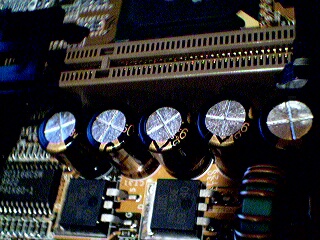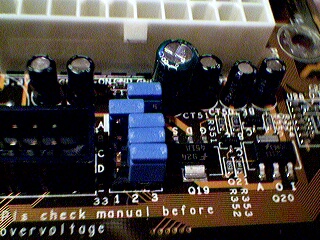|
Despite
having a fairly standard layout there were a few problems. First
off, sandwiching the 4 DIMM slots, IDE controllers, and AGP
port so close together makes it difficult to move things around
while they are in your case, and it makes the changing of Ram
sticks almost impossible (if an AGP card is installed). Also
with the DIMM slots so close to the slot 1 connector, this might
prohibit the use of some extremely large heatsink/fan combos
on your CPU (such as some Alpha coolers).

CPU
Voltage is set through the use of on-board jumpers (man these
bring back memories), options range from a low 1.3v up to 3.5v
maximum. It would have been nice an option to set CPU voltage
in the BIOS, much like most of Abit's boards. There is also
a set of jumper switches for the setting of your CPU's clock
multiplier. I never had to use this feature because Intel multiplier
locked most of its CPU's making the setting of the CPU's multiplier
impossible.

Overclocking
With
a maximum FSB of 150MHz, this should be an excellent board for
Overclocking. The 10 included capacitors should have also contributed
to high Overclocking stability, but while Overclocking my trusty
Celeron 300, I couldn't get past the 337 MHz mark (on a 75MHz
bus). I was positive it was not my CPU because I had it run
rock stable at 450MHz on an Abit BH6 before. What could have
been the problem?
Next
>>
<<
Previous
|